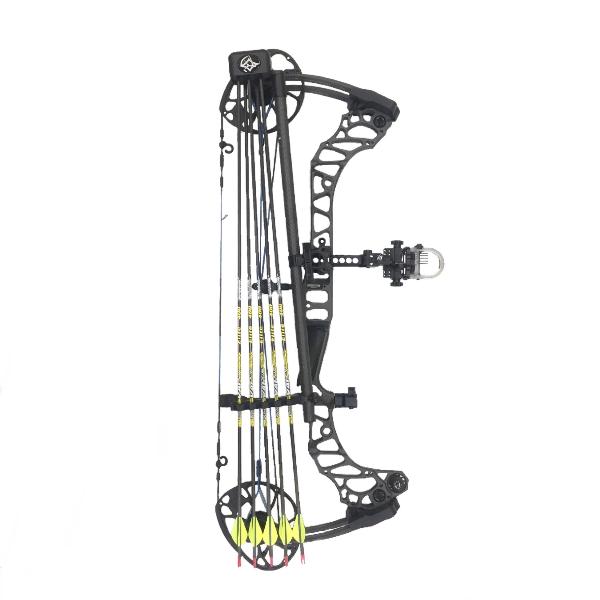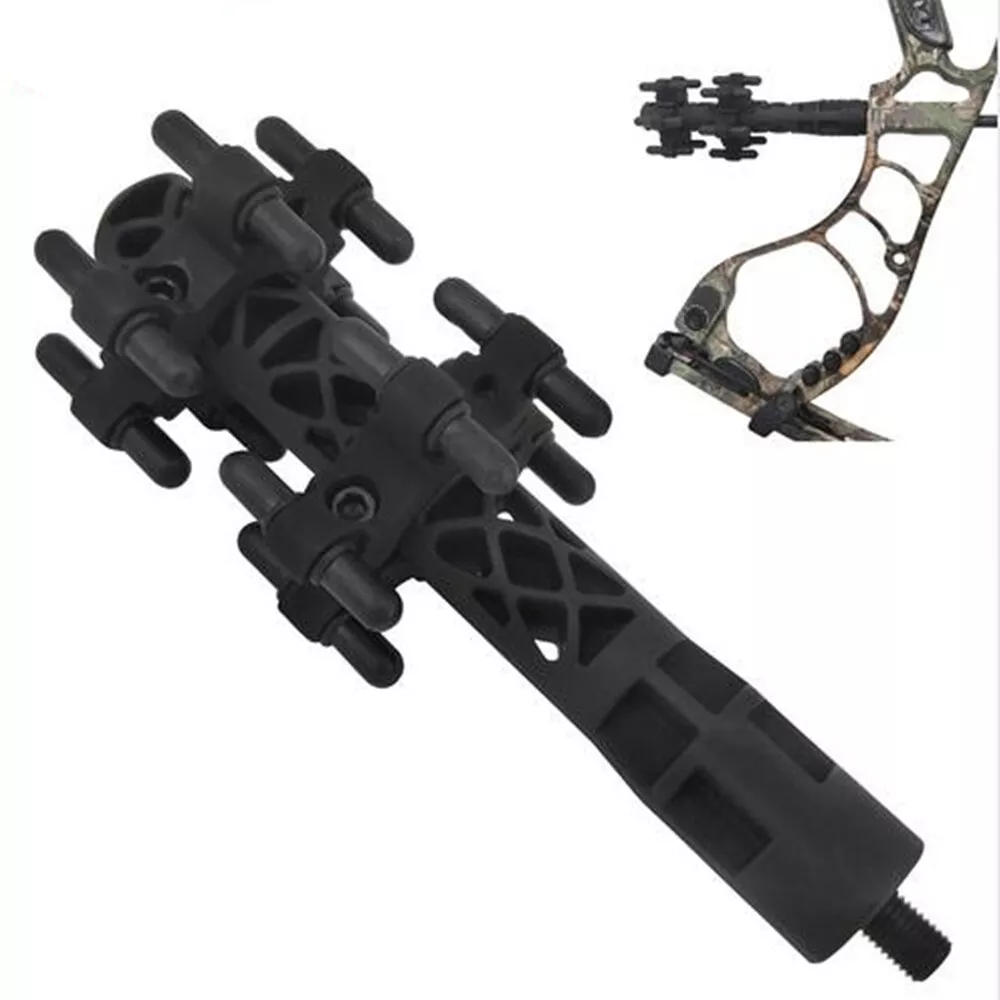The Ultimate Guide to Choosing the Right Archery Stabilizer for Boosted Precision
Amongst the various devices offered, an archery stabilizer plays a significant duty in improving accuracy. In this thorough overview, we will check out the vital variables to take into consideration when picking an archery stabilizer for enhanced precision. Whether you are a seasoned archer looking to upgrade your equipment or a newbie seeking assistance, join us on this trip as we unwind the tricks to choosing the best archery stabilizer.
Size: Discovering the Ideal Stabilizer Length
Establishing the suitable stabilizer length is vital when selecting an archery stabilizer for optimal efficiency. A stabilizer that is too long can make the bow really feel top-heavy and challenging to manage, while a stabilizer that is as well short may not provide enough security and dampening of vibrations.
A longer stabilizer, normally varying from 8 to 12 inches, can provide higher stability and minimize bow torque. This is specifically useful for archers that shoot with a high draw weight or those who have a propensity to torque the bow during the shot. The added size helps to distribute the weight equally and counterbalance any torque or activity.
On the various other hand, a shorter stabilizer, normally in between 4 to 7 inches, provides more maneuverability and quicker response. It is favored by archers that fire with a reduced draw weight or those who need more flexibility, such as hunters or 3D shooters. The much shorter length enables much easier motion with limited areas and faster adjustments.
Inevitably, the optimal stabilizer length is a matter of individual choice and shooting style. It is suggested to trying out different lengths and observe the impacts on security and accuracy. Consulting with seasoned archers or specialists can additionally give valuable insights and suggestions.
Weight: Establishing the Appropriate Stabilizer Weight
After taking into consideration the ideal stabilizer length, the next essential variable to consider when picking an archery stabilizer is figuring out the suitable stabilizer weight - archery stabilizer. The weight of the stabilizer plays a critical role in improving precision and security throughout the shot
The weight of the stabilizer affects the equilibrium and control of the bow. A much heavier stabilizer can provide boosted security and control, specifically for shooters with a tendency for shaky hands or inconsistent shots. It helps to absorb the vibrations and recoil produced by the bow, reducing torque and reducing the impact on the arrowhead's flight.
On the various other hand, a lighter stabilizer permits a quicker and a lot more receptive bow. It can be useful for shooters who focus on ability to move and speed over stability. Lighter stabilizers additionally lower fatigue throughout lengthy shooting sessions or competitors.
To figure out the ideal stabilizer weight for your demands, it is necessary to consider your shooting design, physical stamina, and bow setup. Try out various weights and observing the influence on your shooting efficiency is vital to discovering the ideal equilibrium.
Inevitably, the optimum stabilizer weight will certainly differ for each and every individual archer. It is suggested to start with a moderate weight and make adjustments based upon individual preference and shooting results. Bear in mind, the objective is to attain a steady and controlled shot, while additionally maintaining convenience and ease of use.
Products: Choosing the Right Products for Durability and Efficiency
When picking an archery stabilizer, it is vital to thoroughly consider the products utilized in its building and construction to make sure toughness and enhance performance. The choice of products can considerably affect the total quality and effectiveness of the stabilizer.
Among one of the most click for info commonly used products for stabilizers is carbon fiber. Carbon fiber offers a high strength-to-weight ratio, making it lightweight yet incredibly solid. This material minimizes and soaks up resonances bow torque, leading to boosted stability and precision. Additionally, carbon fiber stabilizers are resistant to temperature modifications and are much less likely to warp or bend with time.
An additional popular material for stabilizers is light weight aluminum. Light weight aluminum stabilizers are recognized for their toughness and rigidity. They supply superb moistening capacities, minimizing the amount of shock and resonance transferred to the shooter's hand. Aluminum stabilizers additionally offer a wide variety of personalization alternatives, allowing archers to change the weight and size to match their choices.
Some stabilizers are created utilizing a combination of products. A stabilizer may have a carbon fiber core covered in an aluminum covering. This hybrid layout combines the ideal high qualities of both materials, supplying optimal security, resilience, and efficiency.
Layout: Recognizing the Various Stabilizer Designs and Their Effects
Considering the materials utilized in archery stabilizers, it is very important to now look into the various designs of stabilizers and their corresponding impacts. The design of an archery stabilizer plays an important function in improving accuracy and decreasing resonance throughout the shot. There are several different styles offered in the marketplace, each with its own special features.

An additional preferred layout is the side bar stabilizer. This style involves connecting a short rod to the side of the bow, alongside the primary long rod. Side bar stabilizers aid in counterbalancing the weight of accessories, such as quivers or sights, and supply additional stability to the bow.
Some stabilizers come with flexible weights. These stabilizers allow archers to tweak the balance and feeling of their bows by adding or getting rid of weights. This attribute is specifically useful for archers that favor a specific weight distribution or intend to try out various setups.
Additionally, some stabilizers incorporate wetting modern technology to reduce resonance and noise. These stabilizers frequently have integrated dampeners or use materials that soak up resonances, causing a smoother and quieter shot.

Accessories: Exploring Additional Devices for Improved Stability
These devices are developed to work in conjunction with the archery stabilizer to provide an also better level of security and precision. One such accessory is the V-bar or the side stabilizer place.
One more device that can enhance security is check a bow sling. A bow sling is a band that connects to the bow and permits the archer to keep an unwinded grip on the bow manage without the anxiety of dropping it (archery stabilizer). This loosened up hold assists to lower muscle tension and enables an extra regular and secure shot
Additionally, a stabilizer weight system can be made use of to fine-tune the balance and security of the bow. These weight systems usually consist of tiny weights that can be added or eliminated from the stabilizer to adjust the balance factor of the bow. By discovering the optimum equilibrium point, archers can achieve a more secure and exact shot.
Conclusion
In conclusion, choosing the ideal archery stabilizer entails taking into consideration aspects such as size, weight, materials, style, and extra devices. The ideal stabilizer size and weight will certainly depend on individual choices and shooting style.
Determining the perfect stabilizer length is critical when choosing an archery stabilizer for ideal performance. A stabilizer that get redirected here is also long can make the bow feel top-heavy and challenging to manage, while a stabilizer that is as well short may not supply adequate security and dampening of vibrations - archery stabilizer.Taking right into account the materials used in archery stabilizers, it is essential to currently delve into the different designs of stabilizers and their particular impacts. Side bar stabilizers aid in reversing the weight of devices, such as views or quivers, and offer additional security to the bow
These weight systems commonly consist of little weights that can be included or eliminated from the stabilizer to readjust the equilibrium point of the bow.